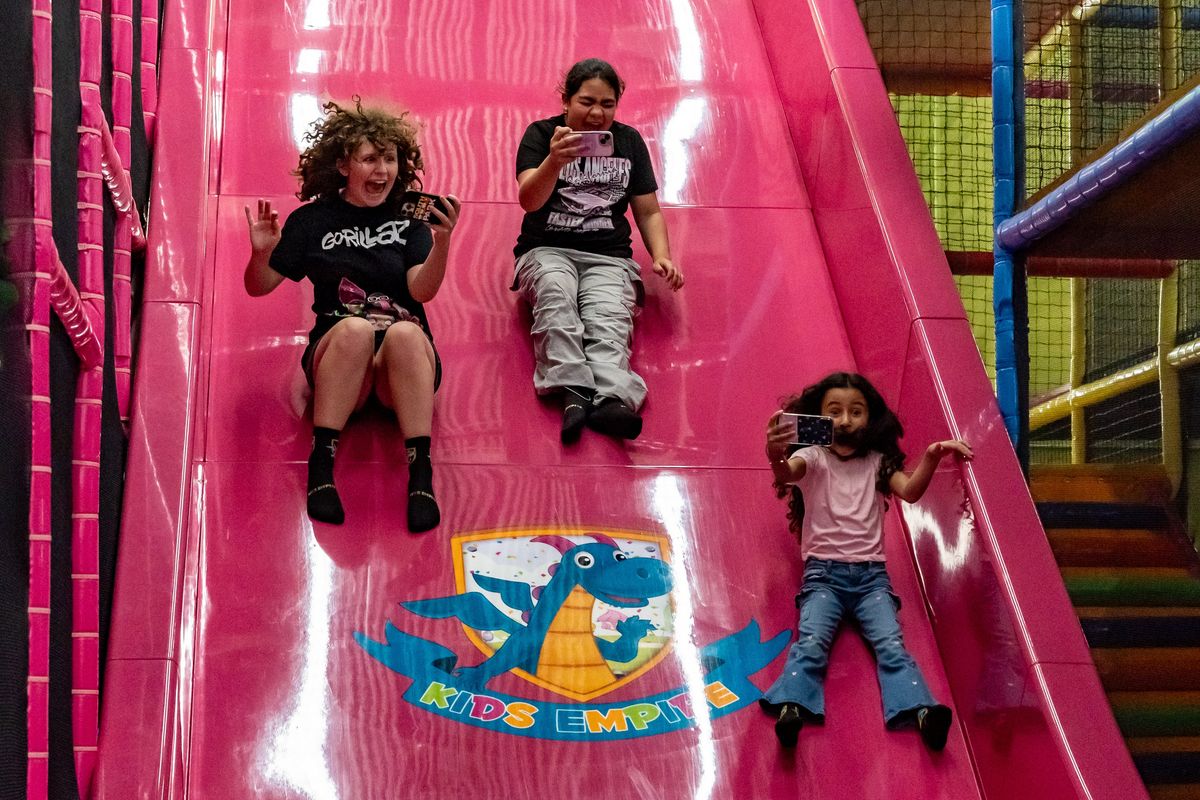Ballerina Misty Copeland is no stranger to making history on the stage.
All images by Ken Browar and Deborah Ory from the NYC Dance Project, used with permission.
Just last summer, she became the first black woman to become a principal dancer at the American Ballet Theatre. It was a proud and empowering moment for people everywhere (and about time!).
Now, she's re-creating history for the camera.
Copeland re-creating Degas' "The Star."
In the upcoming March 2016 issue of Harper's Bazaar, she's helped re-create some of the world's most iconic ballet paintings and sculptures by famous artist Edgar Degas.
The spread comes in advance of a new exhibition opening up at New York's Museum of Modern Art that highlight Degas' work called "Edgar Degas: A Strange New Beauty."
The photos are beautiful and impressively spot-on. But they also come with a deeper meaning: The faces of ballet are changing.
Copeland as Degas' "Dancer."
Degas' focus on dancers helped him create some of the most popular images in 19th-century art. Ken Browar and Deborah Ory, the project's photographers and founders of the NYC Dance Project, wanted to bring them into the 21st century.
"It wasn’t so much us trying to reproduce Degas' paintings as it was to bring Misty into them, and to bring the ballet community up-to-date," Ken told Upworthy.
"We’re seeing all body types, all types of people: black, white, Asian, you name it. We’re seeing everything. It's time that gets reflected."
Copeland as "Swaying Dancer (Dancer in Green)."
Photographing Misty as if she were in a Degas painting shows the world that ballet doesn't have a specific race or ethnicity.
You don't need me to tell you that the industry has been overwhelmingly white throughout history.
Just picture a traditional ballerina in your head, and you'll recognize that truth. Even though the times have changed, though, it's still been difficult to find images of dancers that represent the variety of shapes, sizes, ages, and backgrounds they actually come in.
That's one of the reasons Ken and Deborah started the NYC Dance Project: to show and celebrate the dancers of today.
"A few years ago, our younger daughter wanted to have her room redecorated and wanted to have her favorite dancers hanging up, and we had a hard time finding photographs of them," Deborah recalled over the phone. "There wasn’t that much of the current stars out there. Ken was like, 'Let’s just photograph them ourselves.'"
With that, the NYC Dance Project was born. A study of dance and movement in photographic form, their work has gained quite a following in just a few years, with a book expected to drop this fall.
"I definitely feel like I can see myself in that sculpture — she just seems content but also reserved," Copeland said about re-creating Degas' "Little Dancer Aged Fourteen."
One of the keys to their success may be where they photograph most of their subjects: in their living room in Brooklyn. It creates a more comfortable and intimate atmosphere, though Deborah noted, "sometimes we are literally moving our cats out of the photo."
Together, they're part of a larger push to move diversity in dance forward. Because not only does a broader mix of people help to show more girls and boys that they do have a place in the industry — combating the phenomenon that you can't be what you can't see — it's financially smart too.
More diverse dance companies create bigger, more diverse audiences. And you know what that means? Cha-ching.
Like Ken and Deborah, Copeland knows that the ballet world has a long way to go, but that this is a good start.
She's shattering the glass ceiling, pointe shoes and all, but she knows it's not just about her.
Real talk on "The Late Show With Stephen Colbert"/YouTube.
There's so much talent and untapped potential out there. Someday we'll get to a place where people of all races and ethnicities see opportunities to succeed in the world of ballet and in many other stereotyped professions.
In the meantime, it's encouraging to see those leading the way into the future on the stage, behind the camera, with a paintbrush, or with their words.
Check out this behind-the-scenes look at how they channeled Edgar Degas' work for Harper's Bazaar. They nailed it.


 Sandra’s granddaughter, E’s daughter, and another friend at an indoor park (July 2025)
Sandra’s granddaughter, E’s daughter, and another friend at an indoor park (July 2025) One of the ladies Sandra sponsored from Venezuela and her partner during Sandra’s first visit to meet her (December 2023)
One of the ladies Sandra sponsored from Venezuela and her partner during Sandra’s first visit to meet her (December 2023) A handwritten note with the words "good job!" on it
A handwritten note with the words "good job!" on it A man smiling
A man smiling A dad with his kid on his shoulders
A dad with his kid on his shoulders Team collaboration and brainstorming session at the office.
Team collaboration and brainstorming session at the office. Man focused on his phone outdoors in casual attire.
Man focused on his phone outdoors in casual attire. Team debate heats up, leaving one member stressed.
Team debate heats up, leaving one member stressed. Office debate: exchanging ideas with passion.
Office debate: exchanging ideas with passion. Im Old Tv Shows GIF by PBS SoCal
Im Old Tv Shows GIF by PBS SoCal  Kelsey Grammer as Dr. Frasier Crane in 1996By US Treasury Dept. Public Domain
Kelsey Grammer as Dr. Frasier Crane in 1996By US Treasury Dept. Public Domain naked matthew broderick GIF
naked matthew broderick GIF  Oprah Winfrey Reaction GIF
Oprah Winfrey Reaction GIF  Ryan Seacrest, television and radio host and producer, hosts the 2016 USO Gala, Washington, D.C., Oct. 20, 2016.via Jim Greenhill from McLean,
Ryan Seacrest, television and radio host and producer, hosts the 2016 USO Gala, Washington, D.C., Oct. 20, 2016.via Jim Greenhill from McLean,